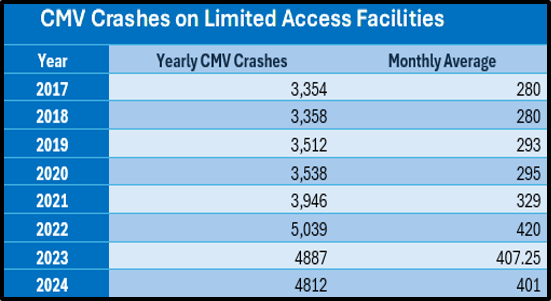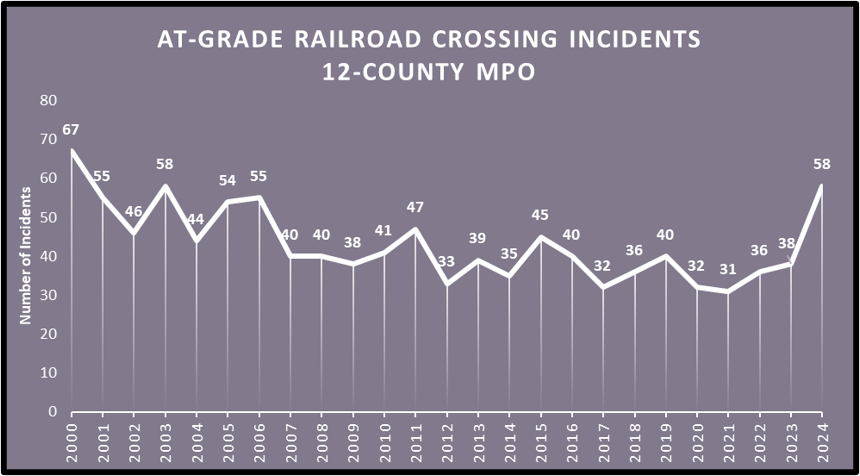Freight Safety
Regional transportation safety initiatives are developed to create a safer environment for all travelers in the region. As the population grows and freight traffic increases, the potential for roadway incidents between automobiles and Commercial Motor Vehicles and trains escalate.
Freight Safety Initiatives
Goal
To create a safer environment for freight and passenger movements through physical improvements and safety awareness initiatives
Truck Safety
Reduce truck related incidents by informing the public about safe driving practices around heavy-duty freight vehicles.
Rail Safety
Reduce rail crossing and trespassing incidents by informing the public about safe rail crossing habits and practices.
Statistics
Since 2019, on average, there have been 338 truck-involved crashes per month in North Texas. The number of crashes has increased each of those years. By understanding the importance of proper driving near and around trucks, navigating traffic will be safer, faster, and more efficient.
Since 2000, when there were 67 incidents in North Texas, the number of incidents has been trending downward. In 2024, there were 58 incidents recorded. To continue this important safety trend, drivers and pedestrians should heed safety signals and warnings.

2025 Safety Campaign
The 2025 Safety Campaign plans to reduce freight-related accidents and inform the public about safe driving practices near large commercial motor vehicles.
This year’s campaign also incorporated rail safety. Operation Lifesaver and NCTCOG collaborated again to reduce rail crossing-related accidents and inform the public about safe rail crossing practices. It is important to keep our communities safe through continued rail crossing safety education. For more information on the 2025 Safety Campaign please visit North Central Texas Council of Governments - 2025 Freight Safety Campaign (nctcog.org).
Staff Contacts: Jeff Hathcock, Mike Johnson, Dan Lamers
